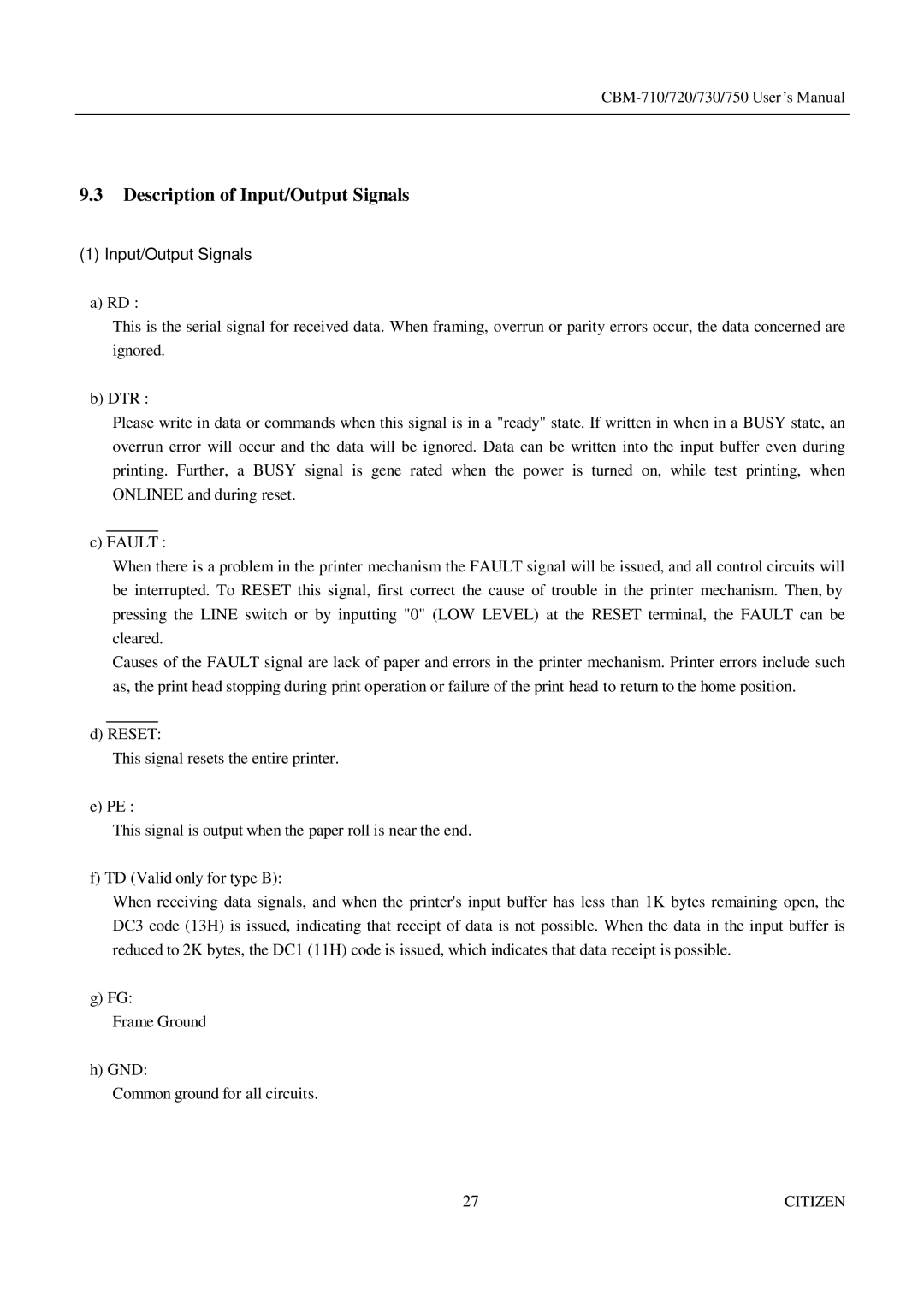
9.3Description of Input/Output Signals
(1)Input/Output Signals
a)RD :
This is the serial signal for received data. When framing, overrun or parity errors occur, the data concerned are ignored.
b) DTR :
Please write in data or commands when this signal is in a "ready" state. If written in when in a BUSY state, an overrun error will occur and the data will be ignored. Data can be written into the input buffer even during printing. Further, a BUSY signal is gene rated when the power is turned on, while test printing, when ONLINEE and during reset.
c) FAULT :
When there is a problem in the printer mechanism the FAULT signal will be issued, and all control circuits will be interrupted. To RESET this signal, first correct the cause of trouble in the printer mechanism. Then, by pressing the LINE switch or by inputting "0" (LOW LEVEL) at the RESET terminal, the FAULT can be cleared.
Causes of the FAULT signal are lack of paper and errors in the printer mechanism. Printer errors include such as, the print head stopping during print operation or failure of the print head to return to the home position.
d) RESET:
This signal resets the entire printer.
e) PE :
This signal is output when the paper roll is near the end.
f) TD (Valid only for type B):
When receiving data signals, and when the printer's input buffer has less than 1K bytes remaining open, the DC3 code (13H) is issued, indicating that receipt of data is not possible. When the data in the input buffer is reduced to 2K bytes, the DC1 (11H) code is issued, which indicates that data receipt is possible.
g) FG:
Frame Ground
h) GND:
Common ground for all circuits.
27 | CITIZEN |
